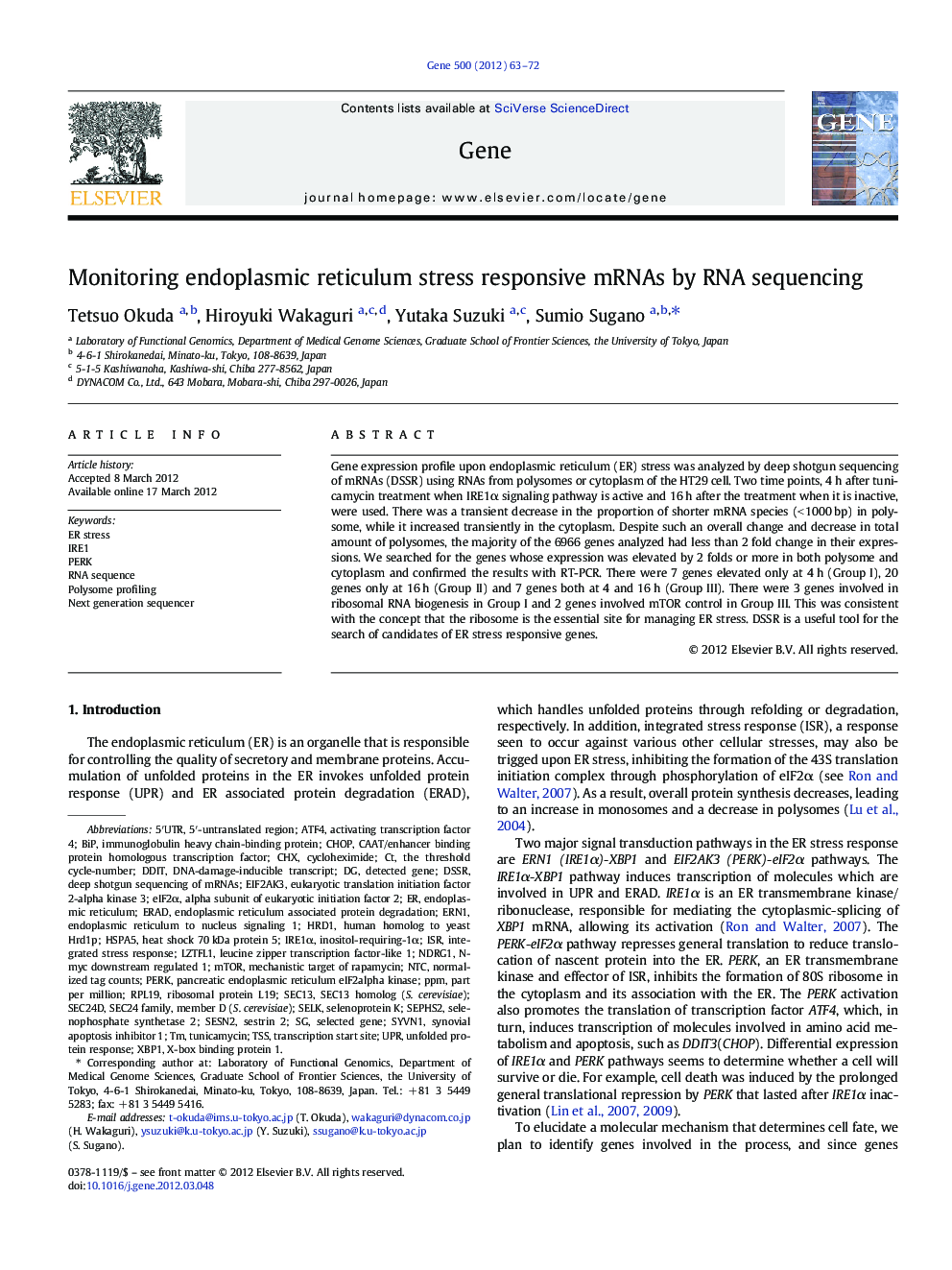| Article ID | Journal | Published Year | Pages | File Type |
|---|---|---|---|---|
| 2817926 | Gene | 2012 | 10 Pages |
Gene expression profile upon endoplasmic reticulum (ER) stress was analyzed by deep shotgun sequencing of mRNAs (DSSR) using RNAs from polysomes or cytoplasm of the HT29 cell. Two time points, 4 h after tunicamycin treatment when IRE1α signaling pathway is active and 16 h after the treatment when it is inactive, were used. There was a transient decrease in the proportion of shorter mRNA species (< 1000 bp) in polysome, while it increased transiently in the cytoplasm. Despite such an overall change and decrease in total amount of polysomes, the majority of the 6966 genes analyzed had less than 2 fold change in their expressions. We searched for the genes whose expression was elevated by 2 folds or more in both polysome and cytoplasm and confirmed the results with RT-PCR. There were 7 genes elevated only at 4 h (Group I), 20 genes only at 16 h (Group II) and 7 genes both at 4 and 16 h (Group III). There were 3 genes involved in ribosomal RNA biogenesis in Group I and 2 genes involved mTOR control in Group III. This was consistent with the concept that the ribosome is the essential site for managing ER stress. DSSR is a useful tool for the search of candidates of ER stress responsive genes.
► We performed sequence-base expression profile analysis upon ER stress. ► We monitored expressional change of mRNAs in both cytoplasm and polysomes. ► No big changes in gene species in cytoplasm and polysome, while polysomes decreased. ► We found that 3 genes involved in ribosomal RNA biogenesis increased transiently. ► Is consistent with the idea that ribosome is the major site for managing ER stress.
